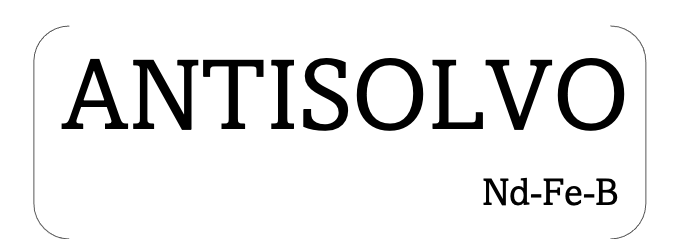In a fruitful collaboration of SOLVOMET/SIM² (Belgium) with Jožef Stefan Institute (Slovenia), researchers have demonstrated that non-rare-earth constituents of permanent magnets, like copper and iron, can be recovered from ethanolic solutions by anion exchange. Certain aspects of ion exchange selectivity in organic solvents have been discussed. The work, which was funded through the EU ERA-MIN ANTISOLVO project, was published in Chemosphere.
Ion exchange for non-rare-earth constituents of end-of-life magnets
In the recycling of end-of-life rare-earth magnets, the recovery of non-rare-earth constituents, such as cobalt, nickel, manganese and copper, is often neglected. They might seem less attractive for the recovery as they represent minor contributions to the total composition of the magnets.
However, finding a suitable method to recover minor constituents of the magnets can be considered as desirable in recycling schemes that strive to minimise by-production of waste and maximise the process economics.
Ion exchange is generally considered as an effective technique to separate compounds from dilute streams. When performed in non-aqueous media, aka non-aqueous ion exchange (NAIX), better selectivity for targeted compounds can often be achieved than in aqueous media. However, this has mostly been done for analytical separations.
Selectivity of anion exchange resin in ethanolic solutions
Researchers from KU Leuven have used strong cation and anion exchange resins for the recovery of non-rare-earth constituents of permanent magnets from synthetic aqueous and ethanolic solutions. The studies with the anion resin (chloride form) revealed that copper, as well as iron, can be selectively recovered from ethanolic mixtures with cobalt, nickel and manganese.
No selectivity was found when using aqueous mixtures or the cation resin (hydrogen form). Based on several studies (batch experiments, UV–Vis, FT-IR, XPS) it was concluded that for the selective uptake of copper and iron from the tested mixtures, both chloride and (hydrogen) sulfate simultaneously have a significant role. The presence of only chloride or only (hydrogen) sulfate in the reaction does not seem to result in the desired selectivity of NAIX.
Researchers hope that the work will inspire and encourage to revive studies on NAIX and promote its application in (solvo)metallurgy.
Full reference to the paper
Dženita Avdibegović, Elke Barbier, Blaž Jaklič, Srečo Davor Škapin, Matjaž Spreitzer, Koen Binnemans, Removal of copper and iron from ethanolic solutions by an anion exchange resin and its implication to rare-earth magnet recycling, Chemosphere, 2023, 330, 138603. doi.org/10.1016/j.chemosphere.2023.138603
Acknowledgement
This work has received funding from the European Union’s Horizon 2020 Research and Innovation Programme, ERA-NET Cofund on Raw Materials (ERA-MIN2) via project ANTISOLVO (ERA-MIN-2019_63) and from the Research Foundation – Flanders (Project G0H6220N). The authors are grateful to Dr. Brecht Dewulf (KU Leuven) for his help in batch experiments.

